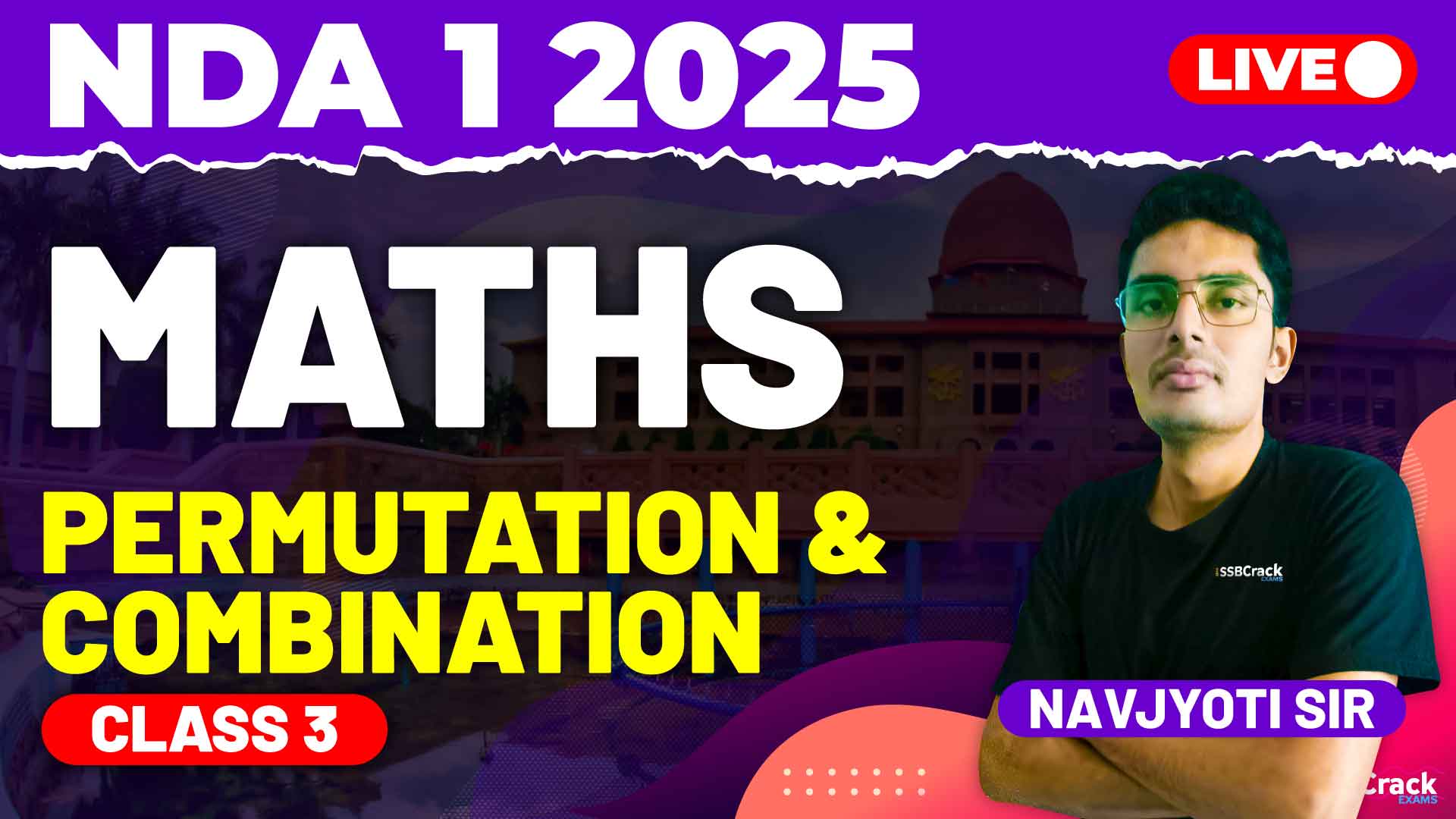As we delve into preparing for the National Defence Academy and Naval Academy (NDA-NA) exam, a recent class dedicated to Permutations and Combinations has added significant value for students aiming to master these essential concepts. Permutations and Combinations is a core topic in the NDA-NA Maths syllabus, appearing frequently due to its vast applications in problem-solving, counting, and arrangement questions. The focus of this class was to practice multiple-choice questions (MCQs) based on previous exam patterns, equipping students to tackle permutation and combination questions with speed, accuracy, and confidence.
Key Insights from the Class: Practicing MCQs with Precision
The class aimed at reinforcing students’ skills in solving typical exam-style questions related to permutations and combinations. By practicing MCQs, students could directly apply the theoretical knowledge they’ve gained in real-world scenarios. Here’s what we covered during the class:
1. Diving Deep into Permutations
- Concept: Permutations refer to the different ways in which items can be arranged. In this context, students need to focus on problems where the order of selection matters.
- Common Problems Practiced: Questions were centered around arranging items with specific constraints, such as when certain items must always come first, be adjacent, or cannot be placed together. By solving these MCQs, students sharpened their understanding of permutations under various conditions.
2. Exploring Combinations in Context
- Concept: Combinations involve selecting items from a set without considering order. This is crucial for questions where only the group selection matters rather than the arrangement of items within the group.
- Problem Scenarios Practiced: Questions included selecting groups of students for teams, choosing subsets of items from a larger set, and calculating ways to form committees. This gave students insight into the practical applications of combinations.
3. Applying Fundamental Principles
- Factorials and Basic Counting Principles: Since factorials and basic counting methods are foundational to both permutations and combinations, the class also included MCQs focused on these basics.
- Special Conditions and Constraints: Many NDA-NA questions come with specific constraints, like restrictions on certain elements being chosen or placed. Practicing MCQs with these conditions helped students become familiar with complex problem-solving scenarios.
4. Using Patterns to Speed Up Calculations
- Observing Trends: In multiple-choice formats, there are often patterns and clues hidden within the options. Students practiced spotting such patterns to eliminate incorrect answers quickly.
- Techniques for Faster Calculations: The class emphasized techniques like breaking down problems, reordering steps for clarity, and using elimination to work through questions quickly and effectively.
By tackling questions aligned with the NDA-NA exam format, students could gain experience in spotting key information, applying shortcuts, and managing time efficiently.
Strategies for Excelling in Permutations and Combinations for the NDA-NA Exam
Preparation for permutations and combinations requires both understanding the underlying concepts and becoming comfortable with the fast-paced nature of competitive exams. Below are some strategies that were reinforced in the class to help students prepare effectively:
- Master the Basics with Practice Problems: Before tackling complex questions, it’s essential to master basic concepts like factorials, arrangements, and selections. Regular practice with these foundational elements builds confidence and reduces errors in more advanced questions.
- Focus on Real-Life Applications: Think of permutations as arrangements (like seating people in an auditorium) and combinations as selections (like forming a team from a larger group). This helps to differentiate when to use which concept.
- Learn Key Results and Shortcuts: Certain properties in permutations and combinations are frequently helpful for speeding up calculations. For example, knowing the behavior of selections when groups are divided can save time. Memorizing these properties helps you quickly spot opportunities to simplify questions.
- Develop Pattern Recognition Skills: With MCQs, especially under time constraints, pattern recognition becomes invaluable. Practice noticing recurring structures in questions or spotting elimination-friendly options.
- Solve Previous Year Papers: NDA-NA often repeats question styles, so familiarity with previous years’ questions can be a significant advantage. This also helps you understand the level of difficulty and types of constraints commonly used.
- Time Yourself in Practice: To manage time effectively during the exam, practice under timed conditions. Aim to complete questions accurately and quickly, as timing is critical for success in the NDA-NA exam.
- Use Diagrams for Visualization: Especially in combination problems involving selection of items, it helps to visualize groups or arrangements. Drawing simple diagrams or charts can make complex questions easier to understand and solve.
- Revise and Clarify Doubts: If any concepts seem unclear during practice, make it a priority to clarify them. Permutations and combinations involve a lot of rules, and confusing one for another can lead to mistakes. Revisiting challenging areas builds clarity and boosts confidence.
Conclusion
Permutations and combinations form the foundation of a large portion of questions in the NDA-NA Maths syllabus, testing both analytical skills and logical thinking. By focusing on practicing MCQs in this recent class, students were able to directly apply their theoretical knowledge, gain exposure to exam-style questions, and refine their problem-solving approach. With strategic preparation and consistent practice, permutations and combinations become much more approachable, allowing students to confidently tackle related questions during the exam.
For aspirants aiming to score high in the NDA-NA exam, mastering permutations and combinations is essential. By blending a strong grasp of the basics with effective test-taking strategies, students can streamline their preparation and approach the exam with a solid foundation in one of the most rewarding topics.


















